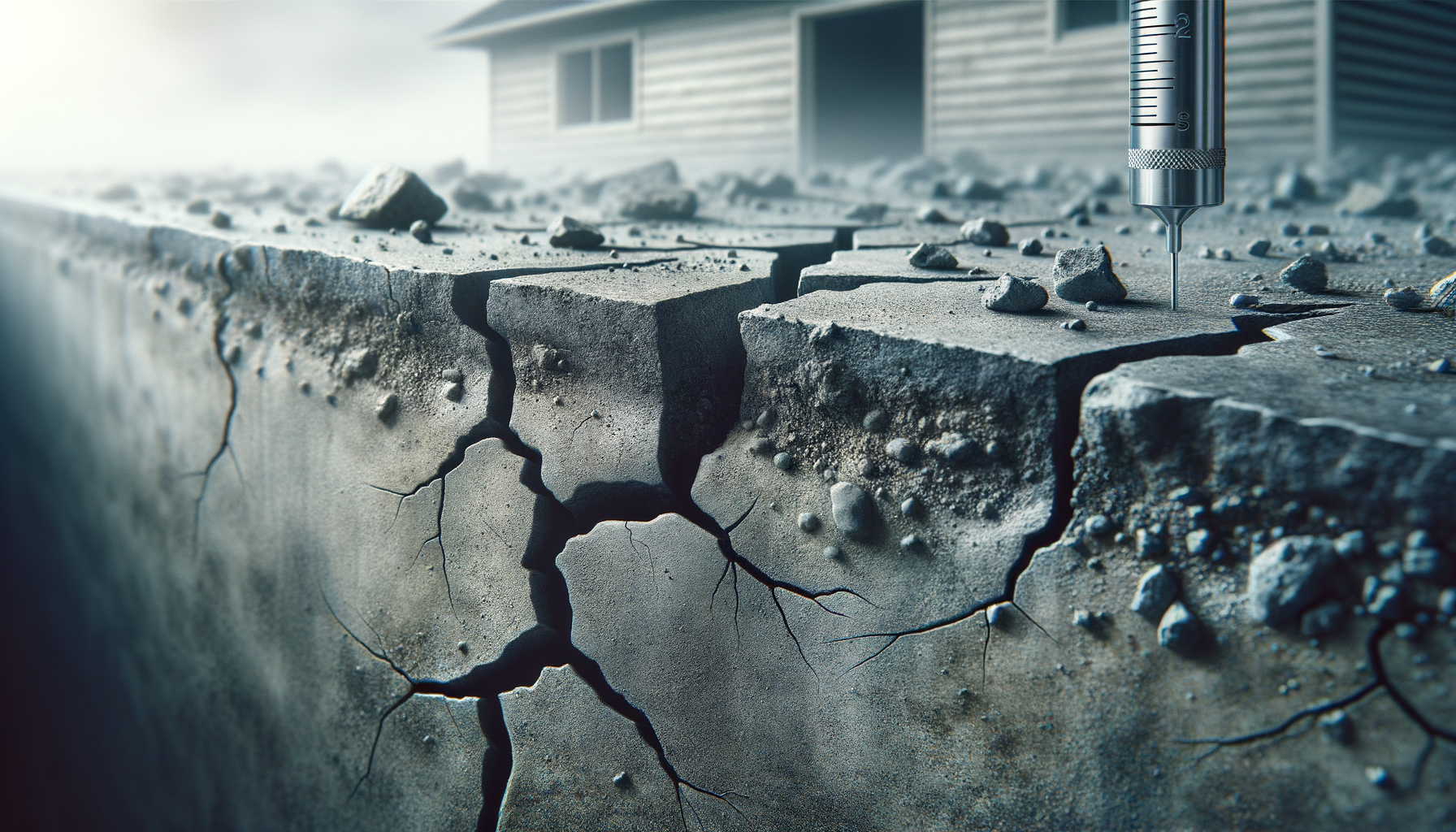Introduction to Concrete Foundation Repair
Guess what? Fixing a foundation is one of the most important repairs a homeowner might need to do. A strong foundation helps your house stay strong and safe against different weather conditions. In this article, we will talk about common foundation problems, signs to look out for, and ways to fix them. Whether you like DIY projects or want to hire a professional, we’ll help you understand concrete foundation repair.
Understanding Concrete Foundation Problems
Common Issues
Concrete foundations can have problems like:
- Cracks: These can show up in walls or floors and be small or big.
- Settling or Sinking: This can make your foundation uneven.
- Bowing Walls: Walls bend inward due to pressure from the outside.
- Uneven Floors: Floors may be slanted or uneven, which can be dangerous.
Causes
These problems can happen because of:
- Poor Construction: If the building was not built well, the foundation may be weak.
- Soil Movement: The soil can expand and contract, causing issues.
- Water Damage: Too much water can wear down the foundation and cause cracks.
- Tree Roots: Roots can grow under or around the foundation, causing damage.
Signs Your Foundation Needs Repair
Look out for these signs:
- Cracks in Walls or Floors: Even small ones should be watched.
- Sticking Doors and Windows: This can mean the foundation is shifting.
- Gaps Around Windows or Doors: This points to foundation movement.
- Uneven Floors: These are a sure sign of foundation issues.
- Water in the Basement: Moisture in the basement is a big warning sign.
- Separating Joints: This can show foundation shifting.
- Crumbling Concrete: This means deterioration.
- Musty Smells or Mold: Moisture leads to mold growth.
- Bowing Basement Walls: Outside pressure can cause walls to bend inward.
- Foundation Pushing Up: This is known as upheaval.
DIY vs. Professional Repair
DIY Repairs
Pros
- Save Money: DIY can be cheaper than hiring professionals.
- Learn New Skills: You can learn a lot.
Cons
- Incomplete Fixes: Without expertise, repairs might not last.
- Need Tools and Skills: You may need special tools and know-how.
When to Call a Professional
- Big Damage: Large problems need an expert.
- Safety Concerns: Professionals ensure safety.
- Long-term Fixes: Experts provide durable solutions.
How to Fix Concrete Foundations
Crack Injection
Epoxy
- How It Works: Fills and bonds cracks from inside.
- Best For: Structural repairs.
Polyurethane
- How It Works: Expands to seal cracks.
- Best For: Waterproofing and small cracks.
Slabjacking/Mudjacking
- How It Works: Pumps a mixture under the slab to lift it.
- Best For: Sunken or uneven slabs.
Piering/Underpinning
- Steel Piers: Stabilize deeply.
- Helical Piers: Screwed into the ground.
- Push Piers: Driven into the soil.
Crawl Space Support
- Crawl Space Jacks: Give extra support to weak areas.
Waterproofing
- Interior and Exterior Systems: Use drain systems and waterproof membranes.
- French Drains: Channel water away from the foundation.
Fixing Small Cracks Step-by-Step
Find the Problem
Check how big the crack is to see if it needs a simple fix or a professional.
Prepare for Repair
- Clean the Crack: Remove any debris.
- Clean the Area: Make sure the area around the crack is clean.
Choose the Right Filler
- Epoxy: Best for structural repairs.
- Polyurethane: Ideal for waterproofing.
Fill the Crack
- Tools Needed: Injection kit and safety gear.
- How to Apply: Follow the instructions on the kit.
Finish Up
- Seal the Crack: Use a sealant over the filled crack.
- Paint: Match the repair with the rest of the wall or floor.
Preventing Future Problems
Good Drainage
- Gutter Maintenance: Make sure gutters direct water away from the house.
- Yard Slope: Slope soil away from your home.
Control Soil Moisture
- Water in Dry Times: Prevent soil from drying out.
- Moisture Barriers: Use these to control moisture.
Manage Tree Roots
- Prune Trees: Keep roots away from the foundation.
- Root Barriers: Stop roots from growing towards the foundation.
Regular Inspections
- Yearly Checks: Have a professional inspect your foundation every year.
Conclusion
Fixing and taking care of your concrete foundation is vital for your home’s strength. Knowing the signs of trouble, choosing between DIY and professional help, and understanding the repair methods can save you time and money. If you notice any foundation problems, act quickly to keep your home safe.
Call to Action
Have you dealt with foundation issues before? Share your stories, questions, or tips in the comments below. For more home maintenance tips, subscribe to our blog and follow us on social media.


Leave a Reply